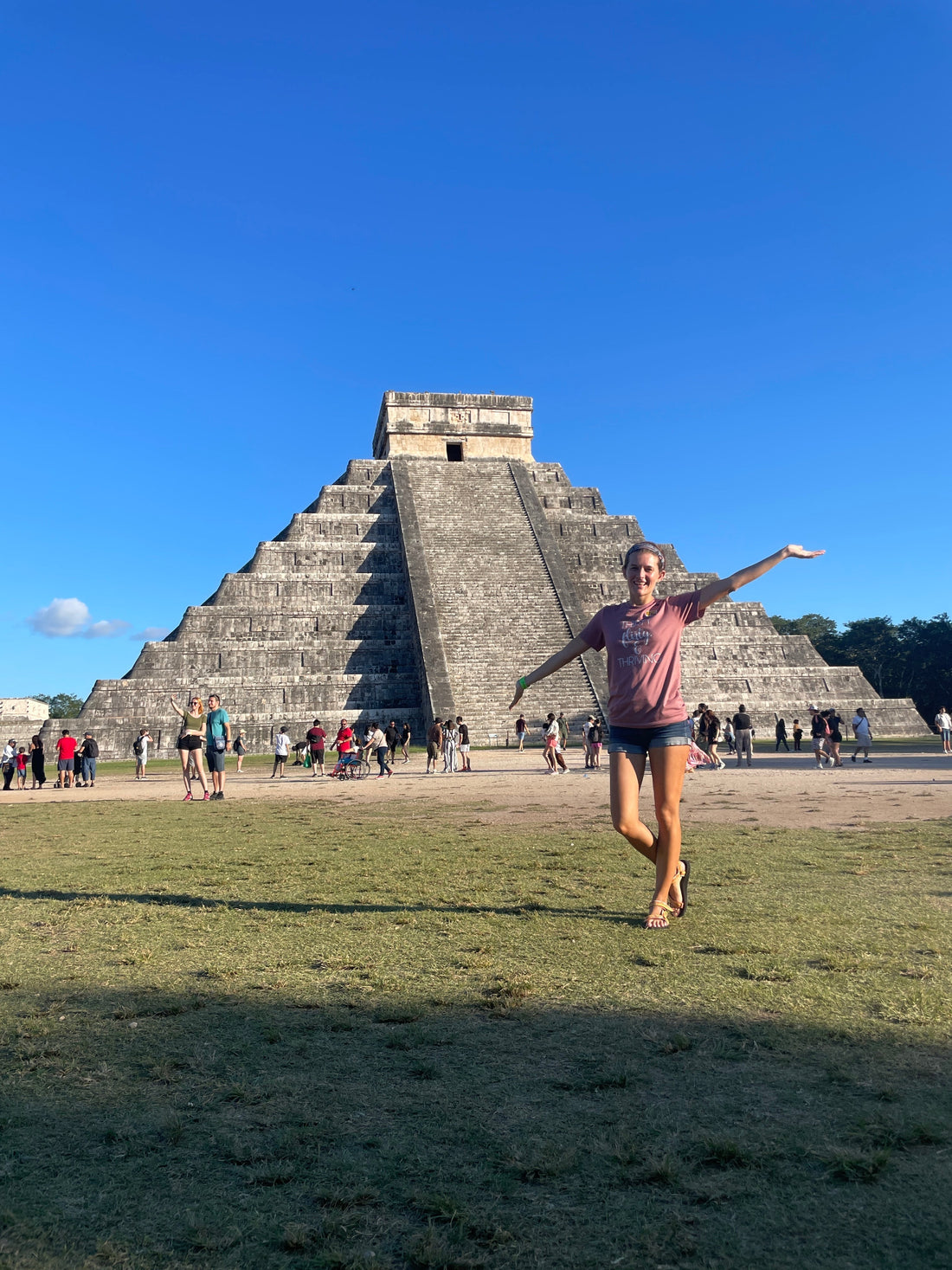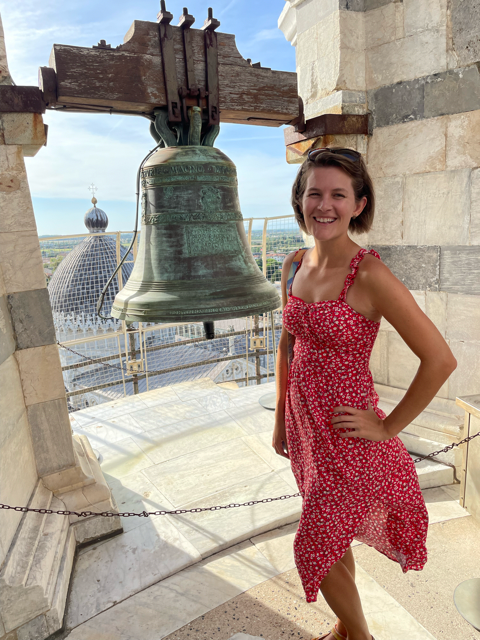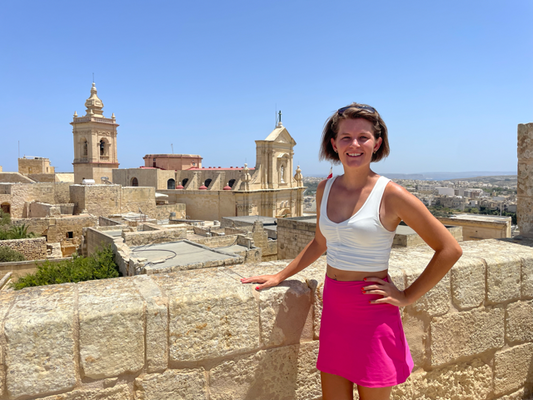
What You Really Need to Know Before Visiting Chichén Itzá
Share
A Wonder of the World That Truly Lives Up to the Hype
Few places make you stop in your tracks like Chichén Itzá — one of the New Seven Wonders of the World and a breathtaking example of Mayan ingenuity.
When I visited back in 2022, I joined a group tour from Cancun. It was low-stress, convenient, and beautifully organized — they picked me up, planned the whole day, and made everything easy.

But here’s the truth: We only had about two hours total at Chichén Itzá. Between parking, walking in, the guided portion, and getting back to the bus, I really only had about 45 minutes to explore freely.
As much as I loved the experience, I left wishing for more time to soak it all in. It’s one of those places that deserves a slow wander, not a quick walk-through. I took that lesson and applied it when I later visited Machu Picchu — and wow, what a difference it made.
So if you’re planning your first visit, here’s everything I wish I’d known before going — from travel logistics to insider tips and even a few fascinating bits of history.
A Bit of History: Why Chichén Itzá Is So Important
The name Chichén Itzá means “at the mouth of the well of the Itza,” a nod to the sacred cenotes (natural sinkholes) that were essential to the city’s survival and spirituality.
At its peak between the 9th and 12th centuries, Chichén Itzá was a powerful Mayan city that blended Mayan and Toltec influences. The result? Architecture that was centuries ahead of its time — perfectly aligned with the sun and stars, rich with symbolism, and built with jaw-dropping precision.

One of the most fascinating things I learned: at the Great Ball Court, the winners of ritual games were sometimes chosen for sacrifice — which was considered an honor. The Mayans believed it was a way to serve the gods directly.
In 2007, Chichén Itzá was officially named one of the New Seven Wonders of the World, joining global icons like the Great Wall of China and Machu Picchu. And it’s easy to see why.
Getting There: Your Transportation Options
How long should you plan?
When I did a group tour, we had roughly 2 hours total time on site, including parking, entry, the guided portion, and exit. That left maybe 45 minutes of free time to wander before boarding the bus. I regretted not having more time.
In hindsight, 3 to 4 hours is a much more realistic window for enjoying Chichén Itzá at a comfortable pace — absorbing the main monuments, wandering off-path a little, lingering in quiet corners, and reflecting.
Tour vs. Self-drive / Independent visit
Group tours
Pros: convenience, hotel pickup/drop-off, prearranged guides, less stress
Cons: tight time windows, often rigid itineraries, limited free exploration
Many tours allocate only an hour or two inside, which can feel rushed.
Do-it-yourself / Self-drive / Independent plan
Pros: full control over your timing and pace, freedom to linger, ability to explore lesser-known parts
Cons: requires more planning (transport, entry, guide hire)
As many travel bloggers note: read tour details carefully — sometimes “full-day” tours spend very little time actually in the ruins.
Public transport
You can take an ADO bus (or other regional buses) — for example, Cancun → Valladolid transfer → Chichén Itzá. The earliest buses depart early enough to get you to the 8 a.m. opening, if timed well.
Renting a car
If you’re comfortable driving in Mexico, renting a car gives you freedom to tailor your route, timing, and side visits (cenotes, Valladolid, local towns). The highways are decent, and signage is usually adequate. But be sure to park only in official, secure lots (don’t just pull off the road).
One traveler’s note from Reddit:
“Rent a car for 2 days. Drive to Valladolid… The next morning … continue the drive to Chichén Itzá to beat the crowds…” Reddit
Best time to visit & hours
- Opening hours: 8:00 a.m. to 5:00 p.m., with last entrance around 4:00 p.m.
- Beat the crowds: aim to arrive right at opening (8 a.m.) to avoid the influx of tour buses.
- Avoid Sundays & holidays: many Mexican national sites are free to Mexican citizens on Sundays — which means extra crowds.
- Seasonality: December–March tends to be drier, less humid, and more comfortable for exploring.
- Light & sound show: On certain nights, they host a twilight light and sound show (Kukulkan Nights) at the pyramid — a magical way to see it from another perspective.
What to Pack & On-Site Essentials
- Sun protection: The site is exposed, with minimal shade. Bring a wide-brimmed hat, sunglasses, SPF sunscreen, and a light long-sleeve cover (for midday).
- Comfortable shoes: You’ll walk a lot — sometimes on uneven ground — so sturdy, comfy walking shoes are a must.
- Bug spray / insect repellent: Especially near wooded or jungle-edge areas; mosquitoes and biting insects are possible. (This was something I personally forget to emphasize!)
- Water & snack: Bring your own water and lightweight snacks so you don’t have to backtrack to the entrance pavilion.
- Cash (Mexican pesos): Some vending, parking, or services on site may prefer (or only accept) cash.
- Light backpack or daypack: For your essentials — sunscreen, water, hat, insect repellent, camera, etc.
- Respectful gear / restrictions: Don’t bring large tripods (some say you may need permits), and don’t plan to climb structures (you’ll read more on that next).
Rules, Etiquette & Cultural Considerations
- No climbing: You cannot climb the pyramids or most of the structures at Chichén Itzá. There have been news incidents where tourists tried climbing forbidden parts and were confronted or arrested.
- Don’t bring your country’s flag: At the time of my visit, I learned that displaying national flags was not permitted inside the archaeological zone. It’s seen as political/ceremonial and can be disallowed by site authorities. (Check the current local rules before you go, as these policies can change.)
- Respect the sacred nature: Many parts of Chichén Itzá are more than ruins, they were religious, political, and social centers. Approach them with mindfulness.
- Avoid pushing or rushing others: The site gets busy, and paths can get narrow. Be patient, give people room to linger and observe.
- Vendors & hawkers: Expect vendors near entrances, on paths, or just outside. Some are harmless, some persistent. Be firm if you’re not interested.
- Photography etiquette: Be aware of regulations (e.g. tripods), and don’t block pathways or group gatherings.
- Don’t remove anything: Never take stones, relic fragments, or artifacts. Not only is it illegal, but it damages the site for future generations.
- Show respect for descendant communities: Many modern Maya communities still live near the region. Tourism is part of their heritage continuum. Treat local artisans, guides, and staff with respect.
Must-See Structures & Why They’re Fascinating
Here are key spots you’ll want to linger at (if your time allows):

El Castillo (Temple of Kukulcán) - The iconic step pyramid. During the spring and autumn equinoxes, shadows cast along the stairs create a “snake” effect descending the pyramid — a remarkable architectural alignment.
Great Ball Court - The largest ball court in Mesoamerica (about 545 ft by 225 ft). What’s more astonishing is its acoustics — a whisper at one end can travel to the other side with clarity.

El Caracol (Observatory) - A rounded tower structure believed to have served astronomical functions, allowing Maya astronomers to track celestial movements.
Platform of the Skulls (Tzompantli), Temple of the Warriors, Group of a Thousand Columns - These structures reveal religious themes, military symbolism, and architectural sophistication.
Sacred Cenote / Cenote Sagrado - The well of ritual sacrifices. Artifacts and remains have been recovered from its depths.
Allow yourself time at each. Don’t just “check off” the pyramid and move on. Some of the most meaningful moments come from standing quietly in lesser-explored zones.
My Personal Lessons & Reflections as a Traveler
The group tour was wonderful for ease and stress reduction, but it gave me only a sliver of time to internalize the experience. When planning future ruins (like Machu Picchu), I prioritized more unscheduled time to just be.
I wished I had done more research ahead on the symbolic meaning behind iconography, serpent motifs, astronomical alignments, and sacrifice rituals — having that mental context deepens every glance and angle.
Having a local guide (even hired after entry) can make a huge difference in pointing out small details — sculptural elements, alignment markers, and hidden corners that a group tour might race past.
Chichén Itzá is one of those places that reminds you just how advanced, spiritual, and deeply creative the Mayan civilization was. Standing before El Castillo under the Yucatán sun is something that truly stays with you — long after you’ve left the site.
Whether you go with a tour or plan your own adventure, I hope these tips help you make the most of your visit — and maybe even learn from my mistakes!


